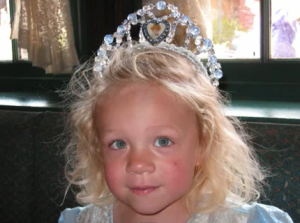Morquio’s syndrome is a metabolic disorder that is inherited and wherein the body misses or lacks the essential ingredients that are necessary to break down elongated chains of sugar molecules known as glycosaminoglycans. Glycosaminoglycans were formerly referred to as mucopolysaccharides.
Morquio’s syndrome is a part of a family of disorders known as mucopolysaccharidoses or MPS. Specifically, Morquio’s syndrome is referred to as MPS IV. It has an autosomal recessive pattern of inheritance
The rate of occurrence for Morquio’s syndrome is not known, but is believed to be approximately in the range between 1 in every 75,000 births in Northern Ireland to 1 in every 200,000 births in British Columbia. The family history of Morquio’s syndrome significantly increases the risk to developing the condition.
Symptoms of Morquio’s syndrome
Most of the individuals with Morquio’s syndrome have a healthy appearance at birth. When an individual affected by Morquio’s syndrome is 2 to 3 years old, he/she may experience retardation of growth, spinal abnormality and in some cases genu valgum. Most patients tend to die at a young age.
Some of the signs and symptoms of Morquio’s syndrome are discussed below:
- Individuals affected by Morquio’s syndrome may have a short stature as the flat vertebrae results in a short trunk. The neck is usually short and the patient may have conditions of the spine curvature such as scoliosis, etc. Pigeon chest or mild pectus carinatum may also be visible.
- The joints have a tendency to be increasing loose. Other defects that affect the bones include flat feet, big wobbly knees, abnormally developed hips, large wrists and elbows and mild dysostosis multiplex.
- The cervical spine may be affected by atlanto-axial instability and odontoid hypoplasia. It may be accompanied by myelopathy which can result in gradual loss of the patient’s capacity to walk
- The combination of all the defects present in Morquio’s syndrome can cause a duck-waddling gait
- The teeth enamel may be unusually thin
- The middle of the face may be underdeveloped and the lower jaw may be protruding
- The cornea may experience clouding
- A person with Morquio’s syndrome may experience mild and simultaneous enlargement of both the liver and the spleen
The following deficits may sometimes be associated with the disorder:
- Abnormal skeletal development
- Abnormal development of the heart
- Dwarfism
- Hyper mobility of the joints
- Knock-knees
- Large fingers
- The teeth may be widely spaced
- Compression of spinal cord
- Flared ribs or Bell-shaped chest
- Cardiac enlargement
Morquio’s syndrome may result in the following complications:
- Obstructive sleep apnea
- Atlanto-axial joints instability
- Skeletal irregularities may pose difficulties to the patient with mobility and also result in pain
- General anesthesia is especially dangerous for the person with Morquio’s syndrome due to the presence of a problematic airway and possible cases of cardiac and pulmonary malfunction
- Cervical myelopathy
- Coronary heart disease and valvular diseases such as thickening of the mitral and aortic valve
- Increased risk to severe chest infections due to impaired pulmonary system
- Hearing difficulties and abnormalities
- Enamel irregularities and other dental anomalies
- Impairment of vision
Types of Morquio’s Syndrome
Morquio’s syndrome is classified into the following two types:
- Morquio’s syndrome Type A: In this type, a lack of the galactosamine-6-sulfatase enzyme causes extensive damage of keratan sulfate along with deposition of glycosaminoglycan in the different tissues of the body. Large quantities of keratan sulfate are eliminated through the urine.
- Morquio’s syndrome Type B: This type of Morquio’s syndrome is milder than type A. The beta-galactosidase enzyme is present in decreased quantities
As per the various studies, there is the presence of a genetic defect in Morquio’s syndrome type IVA in the GALNS gene or the N-acetyl-galactosamine-6-sulfate sulfatase; and the presence of genetic defect in Morquio’s syndrome type IVB, in the GLB1 gene or the beta-galactosidase.
Additionally, the defect in the GALNS gene also affects the catabolism of chondroitin 6-sulfate.
Causes of Morquio’s Syndrome
Morquio’s syndrome is a genetic disorder that has an autosomal recessive pattern of inheritance. This indicates that the defective gene has to be passed on by both the parents for the child to develop Morquio’s syndrome.
As discussed above Morquio’s syndrome is categorized into two forms, i.e. Type A and Type B. The galactosamine-6-sulfatase enzyme is absent in individuals affected by Morquio’s syndrome type A; whereas the beta-galactosidase enzyme is not manufactured in sufficient quantities by the bodies of those affected by Morquio’s syndrome type B.
It is important to note that the body requires both these enzyme for the breakdown of a long thread of sugar molecules known as the keratan sulfate sugar chain. In both the types of Morquio’s syndrome, there is excessive accumulation of glycosaminoglycans in the brain and the different tissues of the body. This can eventually result in organ damage
Morquio’s syndrome Treatment
Currently, there is no known cure for Morquio’s syndrome. The treatment is focused at alleviating the various signs and symptoms associated with the disorder as well as management and prevention of the many complications.
- Research is currently to use gene therapy, enzyme replacement therapy and allogenic bone marrow transplantation as ways to treat the condition.
- The fusion of upper cervical spine has also been recommended as a corrective treatment method for the patients affected by spinal abnormalities
- Total hip replacement, corrective knee surgery and total replacement of the knee are other treatment methods that are currently being studied.
Morquio Syndrome Life Expectancy
Morquio Syndrome pictures

